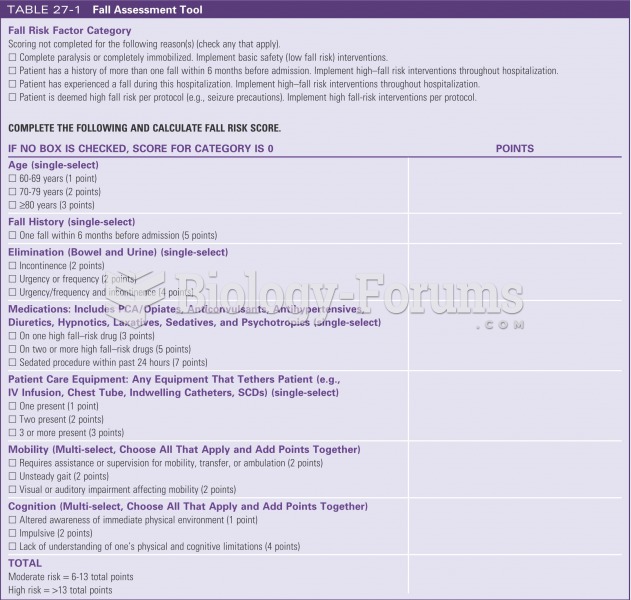Answer to Question 1
ANS: B
A focused or clinical assessment is a brief individualized physical examination conducted at the beginning of an acute care-setting work shift to establish current patient status or during ongoing patient encounters in response to a specific patient concern. A focused assessment may be conducted when signs indicate a change in a patient's condition or the development of a new complication. Emergency assessment is a physical examination done when time is a factor, treatment must begin immediately, or priorities for care need to be established in a few seconds or minutes. Attention is paid to the patient's airway, breathing, and circulation. Other concerns in the emergent setting are noticeable deformities such as compound fractures, contusions, abrasions, puncture wounds, burns, tenderness, lacerations, bleeding, and swelling. A comprehensive or complete assessment includes a thorough interview, health history, review of systems, and extensive physical head-to-toe assessment, including evaluation of cranial nerves and sensory organs, such as with sight and hearing testing. A complete physical examination may be conducted on admission to a hospital, during an annual physical at the office of a physician or nurse practitioner, or on initial interaction with a specialist.
Answer to Question 2
ANS: A
Emergency assessment is a physical examination done when time is a factor, treatment must begin immediately, or priorities for care need to be established in a few seconds or minutes. Attention is paid to the patient's airway, breathing, and circulation. Other concerns in the emergent setting are noticeable deformities such as compound fractures, contusions, abrasions, puncture wounds, burns, tenderness, lacerations, bleeding, and swelling. During an emergency, the nurse may never have time to do a complete assessment and may work to stabilize one body system at a time. A focused or clinical assessment is a brief individualized physical examination conducted at the beginning of an acute care-setting work shift to establish current patient status or during ongoing patient encounters in response to a specific patient concern. A focused assessment may be conducted when signs indicate a change in a patient's condition or the development of a new complication. A comprehensive or complete assessment includes a thorough interview, health history, review of systems, and extensive physical head-to-toe assessment, including evaluation of cranial nerves and sensory organs, such as with sight and hearing testing. A complete physical examination may be conducted on admission to a hospital, during an annual physical at the office of a physician or nurse practitioner, or on initial interaction with a specialist.







